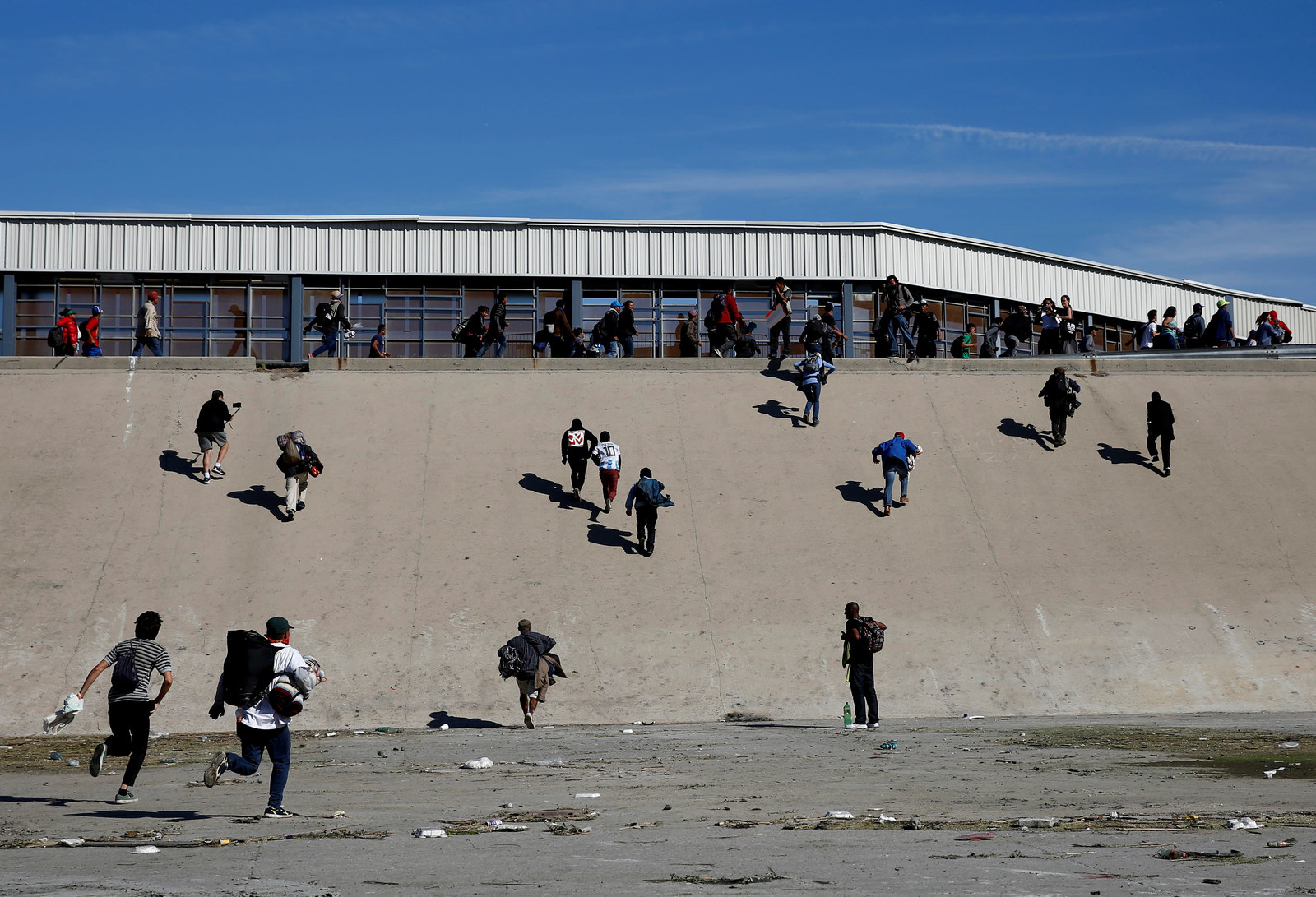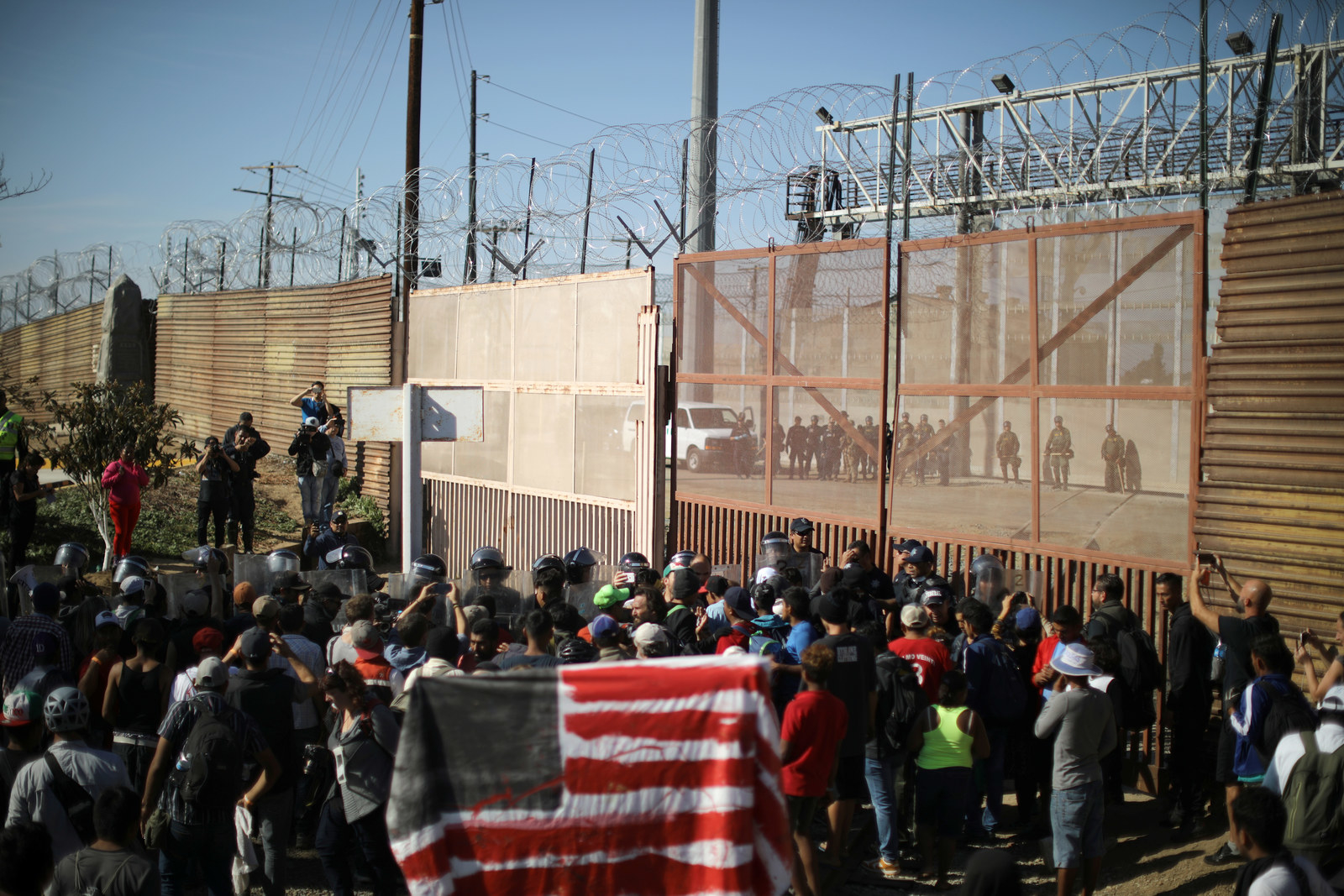https://apple.news/AJe1kxmmyRdi0l-QX8e70xQ

By Brett Samuels in The Hill:
Dem Senator: Trump administration’s policies ‘caused anxiety at the border’
Sen. Ben Cardin (D-Md.) on Monday blamed the Trump administration for causing “anxiety” at the southern border a day after border agents fired tear gas in response to migrants attempting to breach the border.
“There’s a better way to handle this. The United States, the Trump policies has caused anxiety at the border,” Cardin said on CNN’s “New Day.”
“There’s an orderly process that should have been used,” he added. “Should we fix our immigration system? Absolutely. But this administration has made no effort to fix our immigration system.”
President Trump has repeatedly blamed Congress and Democrats, in particular, for failing to pass legislation hardening the country’s immigration laws. The White House and lawmakers have been unable to reach an agreement on a host of immigration issues, though Congress has provided some funding for border security.
Cardin said Monday that the Trump administration has enacted policies that have exacerbated the problem at the border with the so-called caravan of Central American migrants, citing the White House’s move to curb immigrants’ ability to claim asylum and the previous policy of separating families who illegally cross the border.
“So they’re making the circumstances worse, and here we look at children being subject to tear-gassing,” Cardin said. “That’s the United States causing that. That’s outrageous.”
Customs and Border Protection (CBP) on Sunday shut down the busy San Ysidro port of entry near San Diego as hundreds of migrants approached. Tensions flared further when dozens of migrants broke away from a larger group to try and breach the border.
CBP said in a statement that officers fired tear gas into the crowd after attempted illegal crossings and after some migrants threw rocks at border agents.
Trump on Monday morning called on Mexico to deport the migrants back to their home countries and threatened to permanently close the southern border. The president has for weeks painted the group of migrants as an imminent security threat, prompting fierce criticism from Democratic lawmakers.
*****************************************
“There’s an orderly process that should have been used.” Yup! But, Trump refuses to use it and make it work! And, it could have been done for less money and fewer resources than the estimated $200 million military boondoggle at the border.
I also hope Sen. Cardin will urge Rep. Cummings (D-MD) and his colleagues in the House to exercise some “oversight” involving the senior Border Patrol officials who publicly proclaimed that most of those arriving at the border, who have been neither interviewed nor screened because of intentional delays by the US Government, are “economic refugees” not “real refugees.”
I tend to doubt that these loud-mouthed law enforcement officials, who have allowed themselves to become political puppets of the Trump White House, have any idea of what makes someone a “real refugee” under the law. Fact is, that in some Immigration Courts away from the Southern Border, the Immigration Judges continue to be fair and knowledgeable (NOT places like Atlanta, Charlotte, and Stewart). Those Immigration Judges take the necessary hours to fairly and impartially hear asylum cases (apparently largely disregarding artificial “quotas”). And, as a result, some properly documented domestic violence, family based, religious based, and political opposition to gang cases continue to be granted to applicants. Shows what happens when rather than prejudging cases like Trump, Sessions, DHS Senior Officials, and, sadly, some Immigration Judges, have done, asylum applicants from the Northern Triangle aren’t hustled through the “assembly line” and are given a fair chance to be represented and to gather the documentation necessary to overcome Sessions’s badly warped misconstruction of country conditions and intentionally misleading dicta in Matter of A-B-.
So, how can these Border Patrol folks tell by “eyeballing” thousands of individuals from the other side of the border whether their claims are “bona fide” or not? That, even after Trump’s and Sessions’s best efforts to “game” the system, the majority of arrivals from Central America still manage to pass “credible fear” examinations from the USCIS Asylum Office suggests that these Border Patrol officials are blowing (dangerous) “hot air” into an already volatile situation. That’s totally irresponsible Time for some accountability all up and down the line for those carrying out Trump’s misguided immigration policies with no visible resistance to actions that at best strain, and quite possibly violate, our established asylum laws and procedures!
PWS
11-26-18























